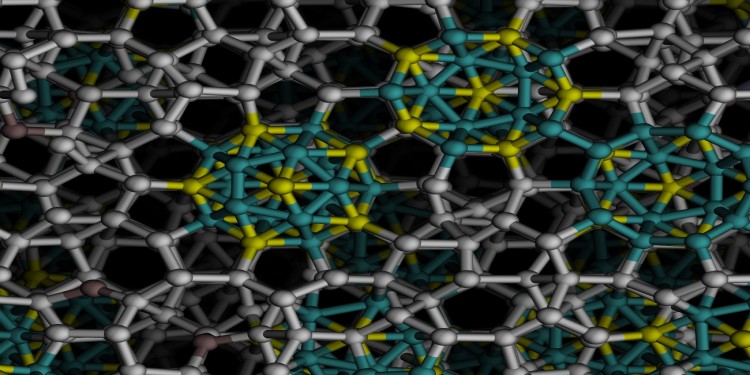In news– Scientists have discovered a third natural source of quasicrystals, extending the latter’s reputation for violent origins.
What are quasicrystals?
- Crystal matter formed atomically in a manner somewhere between the amorphous solids of glasses (special forms of metals and other minerals, as well as common glass) and the precise pattern of crystals.
- Quasicrystals imbue a symbolic power. They’re not like other crystals (their name means ‘almost crystals’) yet they share important properties.
- In solids, the constituent atoms are confined to a fixed arrangement. In crystals, the atoms are arranged in a pattern that periodically repeats itself.
- In quasicrystals, the atoms are arranged in a pattern that repeats itself at irregular, yet predictable, intervals.
- Quasicrystals simply represent an incremental deviation from the natural order – but when you think about creating one in a lab or in nature, their quiet power comes to the fore.
- Creating quasicrystals is not easy because of why crystals form in the first place.
- Take the crystals of common salt (NaCl) for example, whose atoms are arranged in a repeating cubic pattern.
- Why don’t they assume tetrahedral or rhomboidal patterns? Because the sodium and the chloride ions have different sizes and exert different electric forces, and a cubic pattern allows them to pack themselves in without upsetting each other, while also optimising for their density, thermal stability, etc.
- Anything that is naturally abundant implies a natural preference for that form over other possibilities. So whenever sodium chloride crystals take shape, they adopt the cubic pattern, unless extenuating circumstances force them to pick something else.
- Quasicrystals, now, embody these extenuating circumstances.
- Quasicrystals are crystals that have defied a peaceful logic of crystal formation in favour of less-than-optimum, more contested patterns.
- In order to create them that way, the forces that shape them need to constantly nudge them away from the form they would rather take, if left alone, and towards a form that they can take.
- It’s not unlike keeping a spring compressed between your fingers: the spring can be compressed but it would rather be relaxed, so it pushes against you, exerts a force demanding freedom from your oppression.
- By adopting a suboptimal crystal structure (an anthropocentric view, to be sure), quasicrystals offer a similar narrative: they may not be oppressed, kept in a state of stress, but the structure of their atomic lattice still contains the imprints of some stressful event.
Source: The Hindu














